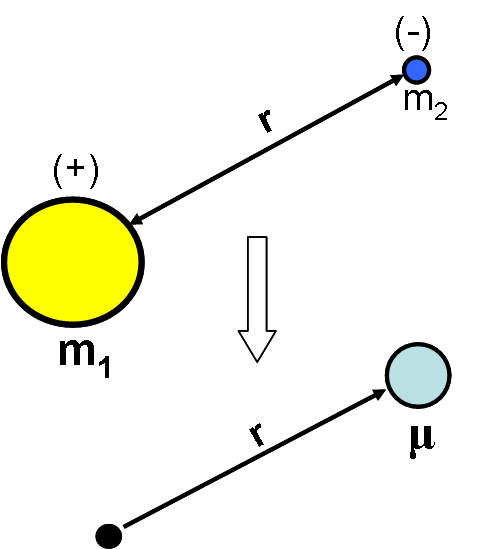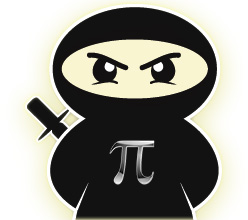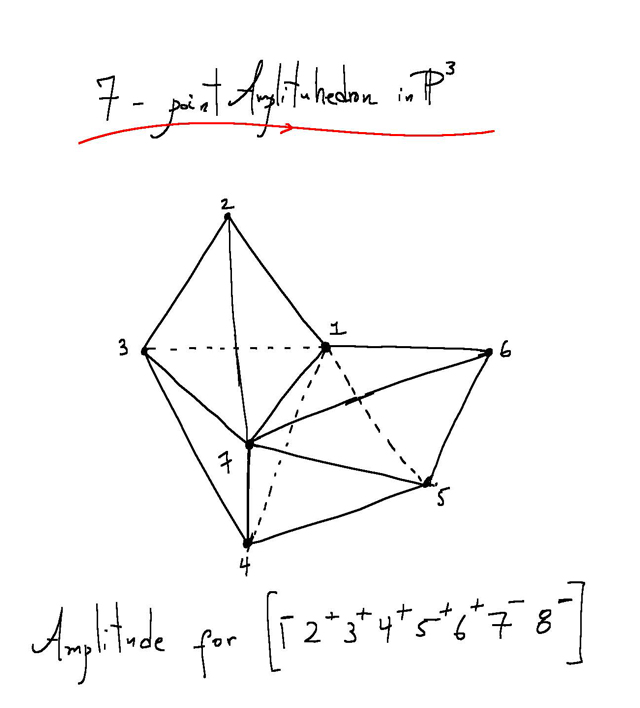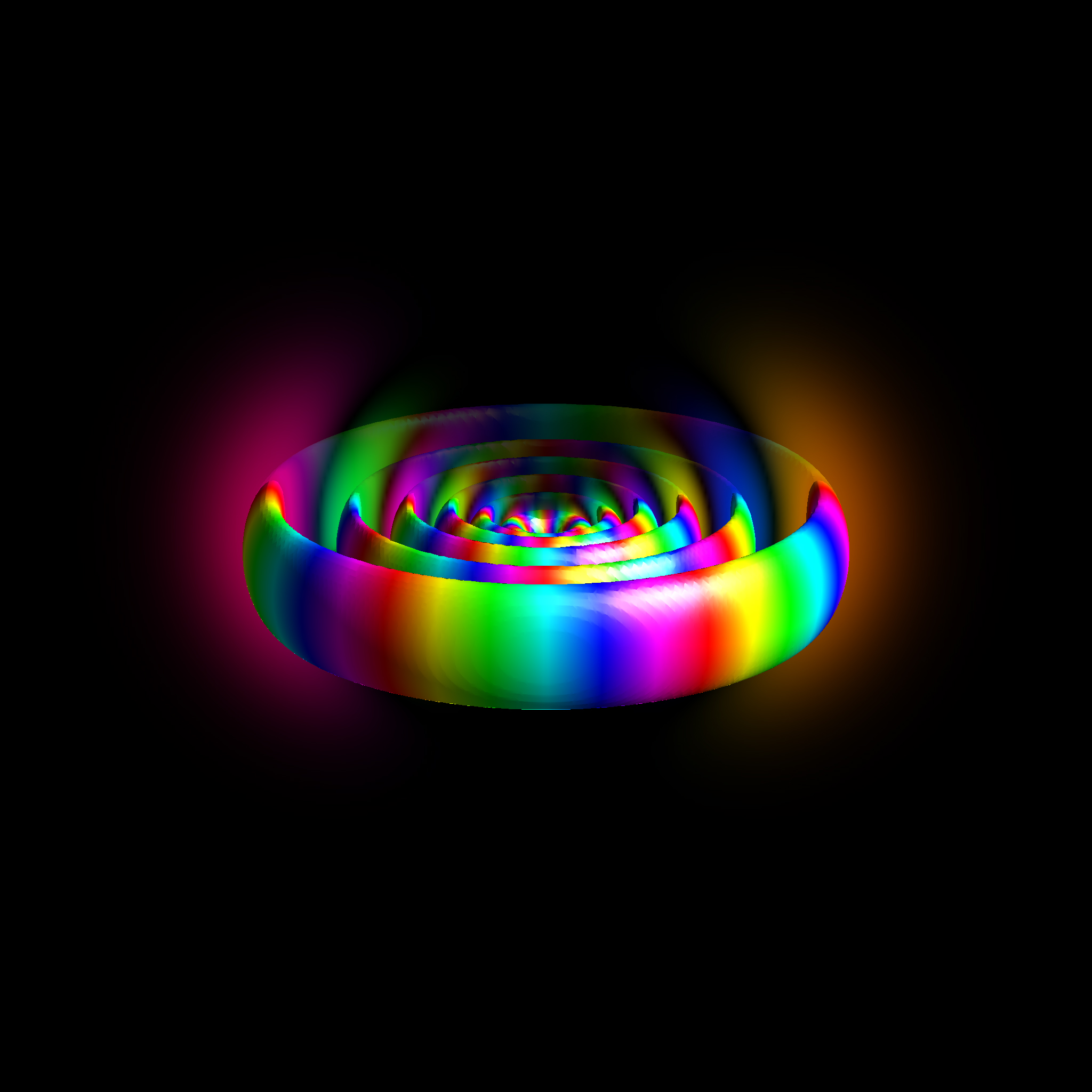Thursday, November 30, 2017
Silver Surfer #1
At the end of the first Silver Surfer movie, the Earth was saved.
Our #1 Alliance member is about to come back.
Stay tuned.
XXX
XX
+
The Surfer
Tuesday, November 28, 2017
Monday, November 27, 2017
QFT - Quantum Field Theory - Effective Field Theories
Quantum field theory is an effective field theory, which is an approximation. It uses the Hamiltonian with the reduced mass concept, so, clearly is an approximation.
The diagram above, a Feynman diagram is a way to diagrammatically show particle interactions - it's a way of encoding the equations or interactions (pictorial representations of the mathematical expressions - in this reduced mass or reductionist theory).
Anyway, all of these field theories that make up QFT are these various effective field theories (QED, QCD) all of which are approximations. These are experimental fields, empirical sciences, empirical theories.
A collection of ideas, such as Tom Campbell's big TOE is more likely reality.
It, however, does not matter what mainstream science does, for it will be snatched from their hands, because consciousness is where it's going. No matter what, consciousness, the key, will emerge as a significant aspect of scientific inquiry, and the next theories will emerge making this materialistic era look like nonsense.
It really doesn't take much of an argument to see what is going on and why these reductionist/isolationist ideas end in so many paradoxes, puzzles, and unsolved mysteries. Simply examine the error term, which is firmly set by the reduced mass assumption, that allows these "theories" to be formulated in such a way as to design experiments.
And nearly all of the experiments work and agree with the theory, except there are cracks, paradoxes, proton radius puzzles, and many other problems appearing (dark matter, dark energy from a related field) that are not adequately addressed and the theory cannot explain. Those are the things that come along with the approximation! Look at the error term! It's negative! No wonder all kinds of craziness and unusual prediction/talk comes out of these effective field theory fields. (reduced mass, $m_r$ is less than either the proton or electron mass, so they claim an
$$m_r\ll m_p$$
$$m_r<m_e$$
"effective mass" of some mythical particle, $m_r$, behaves like the electron (this is the bad assumption, assuming $m_r{\color{red}\equiv}m_e$ IS the electron, however, experimentally, it looks like the electron). The electron is but a wisp, or vortex in the aether, one that dances with its partner the proton.
All we know for sure is the atom (elements). All ordinary matter are made of atoms which we think are made of protons, neutrons, and electrons. The protons are stable dual-toroidal like vortexes in the aether, 1836.15267 time the mass of the electron. So, while the electron and its dynamics account for the large majority of interactions, these reductionist effective field theories are simply technological fields, not equipped to handle the fundamental investigation into the question of what is matter. However, key thing is that the data from those experiments is useful in moving along to the true behavior of Nature.
They are all approximations.
Yet these theories are VERY accurate for what they were intended.
So what is matter? That is the question. And all of the data from these experimental sciences can be used as data points, as they were intended, to piece together the bigger picture of what is matter.
So the apparent insanity serves a purpose for those with eyes to see.
(oh, and with mathematical insight. If this 8D polynomial truly is a way to determine the masses and constants, well, then, once that is proven, simply move on to the next step of solving the problem. No reason to wait for the idiots wasting billions of dollars while consuming humanity and Nature in the process).
A Study in Insanity - The Standard Model #1
It is clear that The Standard Model is an effective field theory that is an approximation to Nature and it is an approximation and has value since experiments can be done to compare "theory to experiment.
In context, when carefully analyzed, it can be shown that the standard model is not a theory, it is an experimental science and technology. It is a limit, an approximation to a theory of Nature.
This series of post will demonstrate via logical discussion in a scientific and mathematical and reasonable man standard, that The Standard Model is an experimental technical science intended to be a step along the way of better understanding Nature.
This is well known by most reasonable humans, however, then, why no progress?
It will become clear that The Standard Model is a study in insanity.
The Surfer, OM-IV
This series of post will demonstrate via logical discussion in a scientific and mathematical and reasonable man standard, that The Standard Model is an experimental technical science intended to be a step along the way of better understanding Nature.
This is well known by most reasonable humans, however, then, why no progress?
It will become clear that The Standard Model is a study in insanity.
The Surfer, OM-IV
Sunday, November 26, 2017
Erwin Schrödinger - Who was he?
From (page 28, 1st ed., 1980,1987):
In 1926, Erwin Schrödinger modified the general wave equation to apply to single particles.Erwin Schrödinger was not a lazy man laying in a bathtub dreaming up equations, he worked very hard to achieved Habilitation (venia legendi) by 1914 (Or did he?). Or was he?
This modification and it's postulates, reducing the general wave equation to apply to single particles , converted the general wave equation to an approximation, the Schrödinger equation, which is used for the foundation of many experimental and technological fields. All approximations that work well within experimental error (experimental error masks theoretical error).
Thus shut up and calculate.
Thus, super computers are needed to solve the equations.
Likely, since there is so much fighting over how to "science" and whoever controls funding wants to keep it this way, and the point is so subtle yet so huge, it has taken up until now to bring a little light to the situation.
The General Wave equation derivation is an approximation already - having to do with concepts of linear vs. non-linear systems and validity of superposition or summing momenta, and other details. In the general case, momenta do not sum just like velocities do not add (in special and general relativity?), so a modification combined with postulates, is an approximation and misses the behavior of the whole. So, a modification to an approximation is the Schrödinger equation. Nice work fellas.
This is at the root of the problem with Western science - reductionism and isolated systems. This is not an accurate way to model Nature.
(but it works good for technology, AI, singularity, while abusing Nature)
Ionization Energy of Hydrogen - Experiment vs. Theory
x
Forgot to mention, the other thing that may possibly come out of this, what I promised, a while back, a calculation - an equation for things such as muon mass, tau mass, these are likely, or the Higgs, or something, is in this error term (mixed in with the quantum number factor):
$m_{err} = m_e-m_r$
This paper explains one of the typical ways to extrapolate the ionization energy from hydrogen line measurements.
Consequently, if the increase in frequency is plotted against the actual frequency, the curve can be extrapolated to the point at which the increase becomes zero, the frequency of the series limit.
This extrapolation is required to be able to extract the frequency for the fully ionized $n={\infty}$ case for the ionization energy. This is where the electron is pushed from the $n=1$ energy state (ground state or fundamental state) of hydrogen to the $n={\infty}$ (free state) and when the electron returns to the $n=1$ state, it gives off a photon of the frequency equal to the ionization energy (or frequency).
Going back to the original equation for the energy of the electron (derived from the full two body proton-electron hydrogen atom Schrödinger equation):
$$E_{n}={-m_re^4\over8ce_0^2h^2n^2}$$
And, using $E=hf$, the ionization energy of hydrogen is:
$$E_{ionization}=E_0=E_{n=\infty\rightarrow1}=E_{n=\infty}-E_{n=1}={m_re^4\over8ce_0^2h^2}$$
Note the reduced mass term, $m_r$. Here is where a potential misapplication of this equation can happen in concert with experimental data that can lead to possible misinterpretations of theory or experiment:
- Step 1, since $m_r\equiv{m_pm_e\over m_p+m_e}$ and ${m_pm_e\over m_p+m_e}\approx m_e$, let $m_r=m_e$ <~~~reduced mass approximation
- Since $m_r\approx m_e$, just assume the equation is valid for the electron, reducing the two body problem into a one body problem.
- Assume a quantum number/function, do experiment, and get excited how closely data matches theory!
Let's analyze the results of this experiment using the actual complete reduced mass term and compare it to using the reduced mass approximation:
From the linked experiment, the experimentally numerically/graphically extrapolated hydrogen ionization frequency is $3.28\times10^{15}Hertz$. From this, the ionization energy can be calculated using:
$$E=hf$$
$E=h\times3.28\times10^{15}Hertz =$ 13.564990eV <~~~ Experimental data
$E_{ionization}(m_r)={m_re^4\over8ce_0^2h^2}=$ 13.598287eV <~~~ Using reduced mass matches data better!!!
$E_{ionization}(m_e)={m_ee^4\over8ce_0^2h^2}=$ 13.605693eV <~~~ Using electron mass theory does not match data as well
Note using the reduced mass is a better match to the experimental data for the results of this one experiment. Due to possible experimental error and the huge implications of this, it would be wise to check more than one experiment, however, I am confident all experiments of this type the data of the experiment will match the theory more closely if reduced mass is used rather than the electron mass. (I will check more and get back to ya if I find otherwise and retract this)
The purpose of this post's investigation is to determine if there is any experimental data to support our viewpoint about properly using the equations from theory, and first indications are there is support for our view. Specifically, the handling of the proton to electron mass ratio and all the theoretical work around an atomic viewpoint of the proton and electron that is just slightly different than mainstream. Actually, it may simply be turning into an interpretation question. And, if correct, an approach that gives us all the masses and constants of physics via numerical algorithm. This is the reason for pushing forward - to see if the algorithm is true (TOP-PCG2). Also, this is favorable info for all the proton radius, mass ratio, and magnetic moment work. Nothing conclusive, yet it is favorable.
While this changes little about mainstream science efforts and experiments, it should, perhaps, start opening minds to the idea that maybe, just maybe, something was missed, or passed over, or covered up, or just plain hidden. The implications are great to science and humanity.
Forgot to mention, the other thing that may possibly come out of this, what I promised, a while back, a calculation - an equation for things such as muon mass, tau mass, these are likely, or the Higgs, or something, is in this error term (mixed in with the quantum number factor):
$m_{err} = m_e-m_r$
$m_{err} = m_e-{m_pm_e\over m_p+m_e}$
$m_{err} = m_e{m_p+m_e\over m_p+m_e}-{m_pm_e\over m_p+m_e}$
$m_{err} = {m_e^2\over m_p+m_e}$
that, combined with $\left({1\over l^2}+{1\over n^2}\right)$ might give some interesting masses and energies to find with this "goggle/viewpoint" of the mainstream, perhaps explaining some of the confusion on particle zoo follies over the years. There are other terms for the quantum numbers in the parenthesis if things such as spin are considered in more detail which have been experimentally played with - key thing is it is all playing around unless there is a clear theoretical and experimental verification plan, and that's what all these years of hammering on the collider have been, looking at more and more advanced terms for the things in parenthesis while missing a blaring 4-5 decimal point error (1 in 2000? approx?) (and swept all errors, theoretical and measurement or otherwise, into a 4% proton radius error, and very, very likely, the same 4% error in the proton magnetic moment, and this overall 1/1836 or so error with this reduced mass assumption blunder, in all other constants, coefficients, and masses...)
that, combined with $\left({1\over l^2}+{1\over n^2}\right)$ might give some interesting masses and energies to find with this "goggle/viewpoint" of the mainstream, perhaps explaining some of the confusion on particle zoo follies over the years. There are other terms for the quantum numbers in the parenthesis if things such as spin are considered in more detail which have been experimentally played with - key thing is it is all playing around unless there is a clear theoretical and experimental verification plan, and that's what all these years of hammering on the collider have been, looking at more and more advanced terms for the things in parenthesis while missing a blaring 4-5 decimal point error (1 in 2000? approx?) (and swept all errors, theoretical and measurement or otherwise, into a 4% proton radius error, and very, very likely, the same 4% error in the proton magnetic moment, and this overall 1/1836 or so error with this reduced mass assumption blunder, in all other constants, coefficients, and masses...)
Friday, November 24, 2017
The Electron Magnetic Moment - (or Eureka! 123)
An electrostatic ""analog*"" for a magnetic moment: two opposing charges separated by a finite distance.
The Dirac theory is not necessary to explain the g-factor for the electron. The deviation of the electron g-factor from that of the rigid sphere can be readily explained assuming that the charge distribution inside electron is different from the mass distribution.
The field's wide open, easy pickings. Easy as 123:
- Step
- by step
- The old fashioned way
For inquires (concerning opportunities in unsolved physics problems), send email to 123@mail.house.gov
* I AM an analog designer and the best science never uses analogs to describe a phenomena, it focuses on the phenomena itself and not an analog(i.e., the analog of water flowing through a pipe for electrical current flow is a very limited analog (model) of current flow and electromegnetism). Do you see how many steps these clownz got away from the ACTUAL phenomena? Is it 1, 2, or 3 steps?
Thursday, November 23, 2017
Wednesday, November 22, 2017
On the Stability of the Proton
If the proton is a packed vortex in the super fluid like aether, and it is this condensed light that is trapped in the black hole like interior of the proton, this black hole like density of the proton implies a charge, and a charge in motion, since the vacuum is polarizable - it is a sea of balanced energy, balanced charge, and gradients cause polarization (charge) as well as mass, energy. (Balanced if you consider that it seems that the creation of a proton implies an "electron" to balance the charge, because the total charge should be zero. The creation, from the vacuum (0 charge, neutral) of a proton, +1 charge, implies the creation of a negative charge which we call the electron. This is part of our idea of dealing with and analyzing the whole.
This super fluid aether is then a sea of these PSUs as we have discussed earlier in the blog, and this super fluid might be best thought of as a sea of EM energy. Or just call them Plancks, or little spheres, PSUs, but it is probably best to leave it undefined until a better definition or more precise is found.
So, anyway, if this is basically what is happening, then the proton is like a vibration in this aether of a certain form, and it's likely a dual toroidal spherical magnetic dipole type of shape (or spherical), but since it's like a black hole, it's just a continuous flow, stable, persistent. Does not decay unless the environment does. Or it could even be a cymatic type vibration in this super fluid aether.
An analogy would be that the blackhole is like an infinite sink, a bi-directional/dual sink of aether flow, as well as a source, since things are in balance, and that super fluid flow is like a vortex, and once flowing, that vortex will not stop until the drain is empty, however, the Universe is very full and a small proton has no hope of ever emptying the Universe, thus the question really doesn't even make sense when the true picture of Nature is understood. It would require an anti-proton AND allowing the excess energy to escape (gamma photon) to restore the vacuum to neutral and undisturbed.
The polarizable nature of the vacuum has been detected/presented recently in certain scientific papers, and supports this idea of the polariazble aether.
There is likely a way to formalized this, and by bringing the aether concept back, the resolution to the proton lifetime seems obvious.
(thinking out loud while I have the time)
more later,
The Surfer, OM-IV
Rest Mass and Rest Mass Ratio of the Proton and Electron
$$m(v)={m_0\over\sqrt{1-{v^2\over c^2}}}$$
$m_0$= mass when $v=0$ is rest mass, when the motion or velocity is 0, when the temperature is 0K, or absolute 0.
So, for the hydrogen atom, we have at absolute 0K, both the electron and proton, with no phononic energy (no temperature) at all.
Remember what the original question was? What is matter? We are attempting to find out what matter is from known elements, and then to find the fundamental constituents of those elements.
So, we focus on the hydrogen atom (because from all experience and all knowledge, it is the simplest element). Presently, there is no need to examine isotopes of hydrogen, as we are working on establishing a reference (focusing on protium) and then testing the theory against experiment. So far, I am not talking about dynamics, so this in no way really challenges quantum mechanics, we are simply working on defining the terms and masses. Especially since it appears these fundamental masses (proton and electron mass) and constants (c, h, R_H, etc) are not defined in mainstream physics - they are determined by measurement (well, defined by relationships to other other masses and constants). We intend to define them theoretically then verify via experiment.
The more clearly the question is defined not only the easier and more clearly the problem is solved, sometimes this allows the solution to present itself. It also avoids the confusion with mainstream quantum mechanics that already deals with the dynamics, like QED (electron and photon dynamics).
So, protium at 0K, a single hydrogen atom, a single proton and a single electron is the starting point.
$$_1^1H={p^++e^-}$$
or is it?
From our senses, from all experience, ALL we actually know exists (in this small world of our investigation) is this thing we call protium, and is has been or can be proposed that this is then composed of a proton and electron, however, what is an electron? what is a proton? This is why we have to proceed very carefully. The purpose is not to redefine physics, but to clearly, from first principles and fundamental constants, frame the problem so clearly that it demonstrates the proposed conjecture that the roots of this 8D multidimensional polynomial are indeed the fundamental masses and constants in Nature or is this simple the results of this model of forcing this viewpoint or structure?
So, while the focus of this blog cannot be determined by the Google algorithms, the focus being brought now to the question should clarify greatly the investigation point of this blog, because it is a very finely, precisely focused, quest: What is matter? And what are these masses and constants of physics? And we are using standard physics parameters, masses and constants, and focusing on the mass ratio of what appears to be two pieces of what constitute ordinary matter.
Also, have to consider that perhaps it is an "ionized" version of protium we are dealing with and an isolated electron, and it's "rest mass" behavior. This is part of the reason of going into such detail on the question because there are possibly finer details or ways of looking at things even before we get to dynamics, which we know form the success, that the dynamics are well known in QED.
We will proceed with looking at protium as a proton and an electron, however, a viewpoint that we are taking is that the proton is a packed stable vortex/dual vortex/magnetic_dipole in the super fluid aether and the electron is simply the inverse - an unpacked vortex. These ideas will need to be developed further, however, the direction will quickly go to looking at protium as a proton and an electron and save a full new analysis for either later or for simply developing the tools and equations to be able to resolve the problem. Since looking at the problem wholly as we are doing, we are able to talk about protium being a proton and an electron and simply provide more detail as to exactly what the proton and electron are rather than a model. Or a precise model of what they are, not an approximation. This is one way to recheck fundamental physics.
The concern is that the equation just happens to converge but it's simply a model that doesn't match Nature. After all, it's basically changing all the values of the constants starting at around the 4-6 decimal place, and -4% reduction in proton radius and likely proton magnetic moment.
More Later, (especially after I look at a cold matter physics or condensed matter/plasmas?)
(The answer very likely has been presented already, however, the question not so clearly.)
The Surfer, OM-IV
(part of the motivation to do this is that a -4% error on proton radius implies there may be some major reworked needed to mainstream approach)
(and because I think the proton IS a fundamental particle too)
Monday, November 20, 2017
Sunday, November 19, 2017
Reduced Mass - Is the Discussion Over?
Time-dependent Schrödinger equation
(single nonrelativistic particle)
$$\mathbf{\hat{H}\Psi}= \mathbf{E\Psi}$$
$$i\hbar{\partial\over\partial t}\Psi(r,t)={\left[{-\hbar^2\over2{\color{red}\mu}}\nabla^2+V(r,t)\right]}\Psi(r,t)$$
$\mu=$ reduced mass <~~ this is the problem
$m^*=m_{eff}$ effective mass <~~ this is the problem
$\mu=m_{eff}$ BIG ASSUMPTION <~~ this is the problem
Experimentalists use this form of the Schrödinger equation to develop fields such as quantum electrodynamics (QED), solid-state electronics, and others. They proceed and skip over the fact that the fundamental masses and constants are not defined. While this will work somewhat for experiments, the theory is flawed. It is leaving out important aspects relative to fundamental physics investigations. Likely this has been well known for a long time but suppressed by savages masquerading as civilized humans.
So, this is the main problem with proceeding with using the reduced mass term in the Schrödinger equation. When one proceeds using this equation and substituting the reduced mass term with an effective mass, $m_{eff}$, and proceed to develop a theory and test and measure and work with effective mass LIKE it IS the mass of the object under investigation, this is missing the behavior of the whole. While experimental results can be obtained this way, it is missing a significant point.
This discussion of reduced mass has gone on so long that it has faded from discussion. It requires careful considerations of mathematical and scientific integrity to even proceed.
The kind of thinking required is the same kind required to assemble a bicycle from Japan, parts from a box, on Christmas Eve, it requires much peace of mind.
The Surfer, OM-IV
Saturday, November 18, 2017
Reduction of a Two Particle System to One (or Reductionism)
(or the problem with breaking physics into subfields QED, QCD
$\mu$ is reduced mass
Reduction-ism and isolation are mainstream concepts, commonly applied principles, applied commonly as postulates in theoretical derivations (or should be applied/included). As a matter of fact, the experimentalists often use the concept of reduced mass in much of their work and derivations when designing experiments to test theory:
$M=m_1+m_2$
$\mu={m_1m_2\over m_1+m_2}$
$x_{cm}={{m_1r_1+m_2r_2}\over{m_1+m_2}}$
$\mu<m_1$
$\mu<m_2$
$\mu={m_1m_2\over m_1+m_2}\approx m_1$ for $m_2\gg m_1$
$\mu={m_1m_2\over m_1+m_2}\approx m_2$ for $m_1\gg m_2$
${1\over\mu_i}=\sum_{i=1}^n{1\over x_i}={1\over x_1}+{1\over x_2}+\cdots+{1\over x_n}$ (eqn 1)*
$m^*={m_1m_2\over m_1+m_2}$
$err(i)=m^*-{1\over\mu_i}$
Q:How many terms does it take to make ${1\over\mu_i}=m^*$ (i.e., drive the error to zero)?
Let's deal with the proton - electron system, where:
$m_1=m_e$
$m_2=m_p$
$m_p\gg m_e$ $\therefore$ $m_2\gg m_1$ case, thus $m^*\approx m_1=m_e$
Note, again, $m^*<m_1$
$m_{ep}^*\equiv{m_em_p\over m_e+m_p}\approx m_e$
What is the error?
$err ={m_em_p\over m_e+m_p}-m_e$
$\;\;\;\;\,\,\,={-m_e^2\over m_e+m_p}$
$\therefore\;err<0$, i.e. the error is negative, thus, no matter how many terms are added to eqn 1, there will always be an error. Adding any term actually increases the error. This is the problem the mainstream has been engaging in repeatedly, over the last few decades - this is insanity!
A: No number of terms will make it fit, thus, this is why the proton radius cannot be determined by the mainstream scientists using their flawed approach.
So, QED, Quantum Electro Dynamics reduces the problem to electron-photon dynamics which work for most ordinary interactions, and QCD, Quantum Chromo Dynamic (LQCD??? or others attempting to address this issue???) basically is inside the proton, reductionism into quarks and gluons, etc, however, now matter how many terms they add, since the initial error is negative, they are adding more error and simply studying error terms and calling them particles. And with high energies, they're studying transient disturbances in the vacuum. Very funny and strange.
Talk about insanity. The mainstreamers are Ghost Busting!
No matter how many terms, it will not fit, thus, convict. Quite opposite of if the glove does not fit, you must acquit.
There is likely formal and more detailed proofs of this concept, however, human dynamics and power struggles seem to make co-operation very challenging and expensive.
For future analysis (from a distant observer)
From a distance $R\gg r$, $r=R_1-R_2$ distance between the two particles:
(examine equations in the detailed form of a distance observer however, include near, intermediate, and far fields)
(could look at it using antenna engineering concepts)
An operator for reducing two particles to one and creation of error terms.
Charged him with committing a 9-11 @1:25
(famous Gomer & Barney Fife citizen's arrest scene makes mockery of integrity of the law and humans)
(famous Gomer & Barney Fife citizen's arrest scene makes mockery of integrity of the law and humans)
Thursday, November 16, 2017
Geometric Nature of Physics
The geometric nature of the structure of the vacuum goes well with this concept from mainstream physics. Wonder what structure the 8 dimensional polynomial:
$$F\left(x_0,\cdots,x_7\right)\equiv1\equiv{{x_0x_1^4}\over8x_2x_3^2x_4^3x_5}-{{\pi x_6x_7x_0}\over2x_4}$$
takes?
The Surfer, OM-IV
FailUre Analysis - Error Analysis, Using the Rydberg Constant
"Modern" papers on The Balmer Series experiment give great insight into the thinking that goes behind a major error in physics for around 70-100 years, AND, more significantly, the ENTIRE history of the measurement of the Rydberg constant, THE MOST precisely measured physics constant, or among the most precisely measured, gives us a great tool to compare the actual behavior of the proton with the spectral lines of the hydrogen atom (and the error of the mainstreamers).
You see, because the mainstream does not have a reference, (i.e., the units and masses are not defined, and more implied), and everything must be verified by measurement in "modern" "science", now, having the proton as a reference (assuming we are 100% correct with the proton radius and the multidimensional roots of the polynomial), THEN, the precise nature of our analysis can be used as a tool to dissect the error of the mainstream. Their arrogance has made this a simple job. They have provide much material bragging of their success. This is part of their downfall. They have documented it, in history, for themselves, and all, to see.
;-)
Monday, November 13, 2017
The Oracle - TOPPCG - Beta 2 (included basic program)
(BETA)
Second run results are in from The Oracle Precision Physics Constant Generator (TOP-PCG2)
THIS RUN IS VERY EXPERIMENTAL AS IT FREES UP ALL CONSTANTS TO BE ADJUSTED
7-8 different fundamental physics constants were calculated:
(BETA version ⟱ The Oracle Says!!)
$e=1.602251451738(3054)\times10^{-19}$ <~~ TOP_PCG2
$h=6.62577381838(3603)\times10^{-34}Js$ <~~ TOP_PCG2
$m_e=9.10979080749(9954)\times10^{-31}kg$ <~~ TOP_PCG2
$r_p=8.41199715091(6646)\times10^{-16}m$ <~~ TOP_PCG2
$R_H=10973240.98261(2936)m^{-1}$ <~~ TOP_PCG2
$\epsilon_0=8.85379198631(7646)\times10^{-12}Fm^-1$ <~~ TOP_PCG2
$c=299779055.6354(0846)ms^{-1}$ <~~ TOP_PCG2
$m_p=1.67262189820(9999)m^{-1}$ <~~ input proton mass (see program for other inputs)
$m_p=1.672693330841(4473)m^{-1}$ <~~ TOP_PCG2
Proton to Electron Mass Ratio = 1836.152673809(3817) <~~ TOP_PCG
Proton to Electron Mass Ratio = 1836.070589933(8043) <~~ TOP_PCG2
$$F\left(x,\cdots,x_n\right)\equiv1\equiv{m_e}{e^4\over8c\epsilon_0^2h^3R_H}-{{\pi r_pcm_e}\over2h}$$
The above coefficients go into the above equation using a numerical method to calculate 1 to 13 decimal places:
$\alpha=fine\;structure\;constant$
$m_e=mass\;of\;electron$
$m_p=mass\;of\;proton$
$r_p=2010\;and\;2013\;muonic\;hydrogen\;proton\;radius\;(Haramein's\;Equation)$
$R_H=Rydberg\;constant$
$m_pr_p={2h\over{\pi c}}=4\ell m_{\ell}\;(Haramein's\;Equation)$
$\ell=Planck\;Length$
$m_{\ell}=Planck\;Mass$
$h=$ Planck's constant
$c=$ Speed of light
$\epsilon_0=$ Permittivity of vacuum
$e=$ elementary charge
A little more correlation work is needed and other experiments, like locking down certain coefficients if they are considered "golden" in their accuracy.
The coefficients are so different after 4 digits because there is a 1 out of 1836 error in the existing coefficients. All related to the proton radius problem, proton to electron mass ratio, and the very poor proton magnetic moment work. And lack of the experimentalists' handing the coefficients according to the theory.
Here's a copy of the program: PhysicsCoefficientsPhxMarkER <- click here
(the IO and comments and bits resolution need a little fixing, but the ideas are there - very short program)
(adjust line 5001 to adjust stopping resolution xresstop=2e-10 runs faster than 2e-15)
(it runs on this online interpreter: http://www.calormen.com/jsbasic/
Subscribe to:
Posts (Atom)


.gif)


.jpg/220px-Erwin_Schr%C3%B6dinger_(1933).jpg)

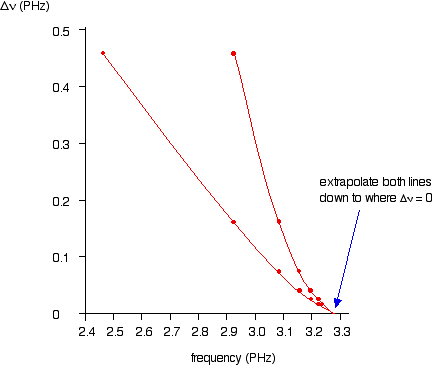





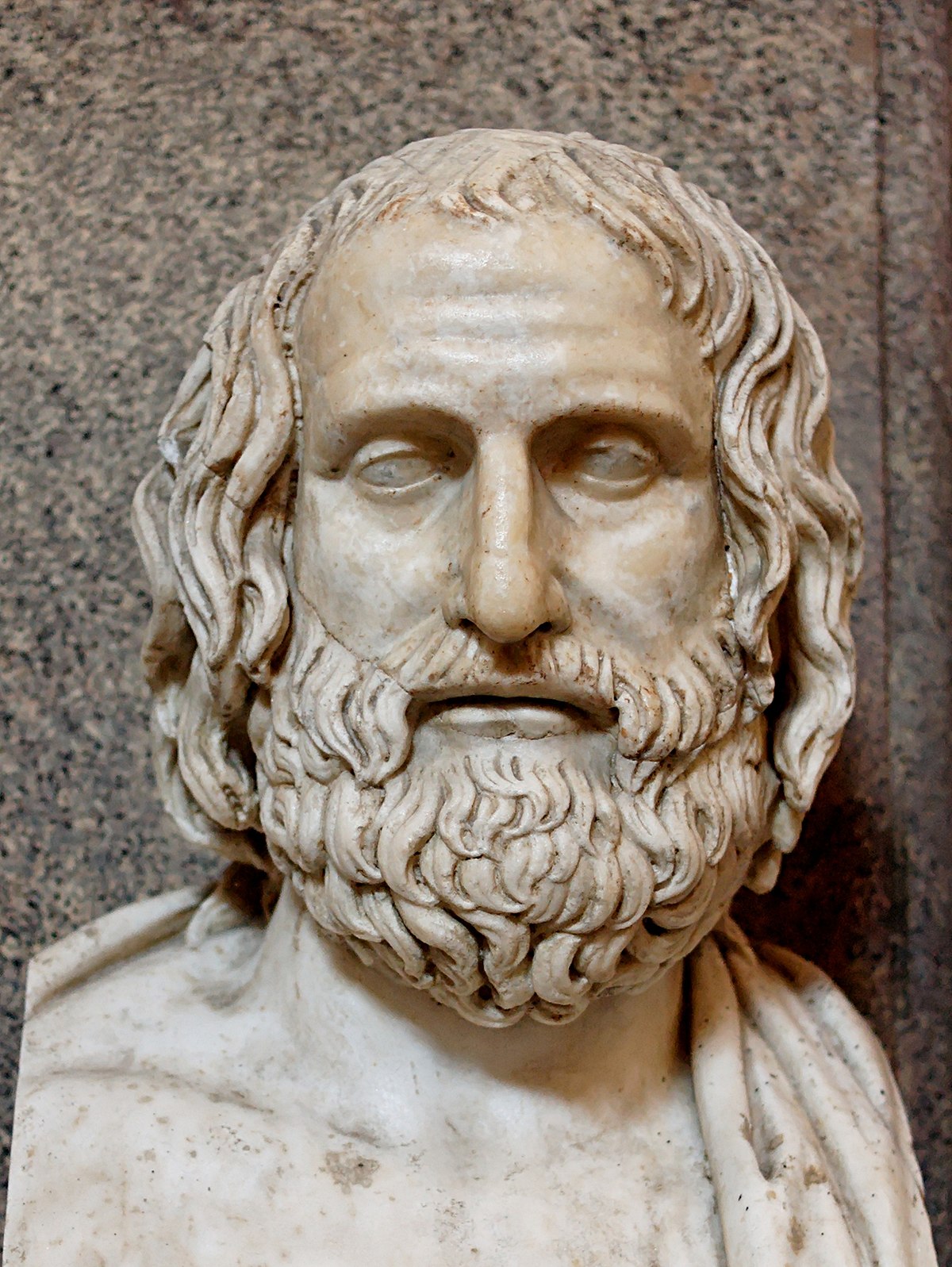

.gif)





